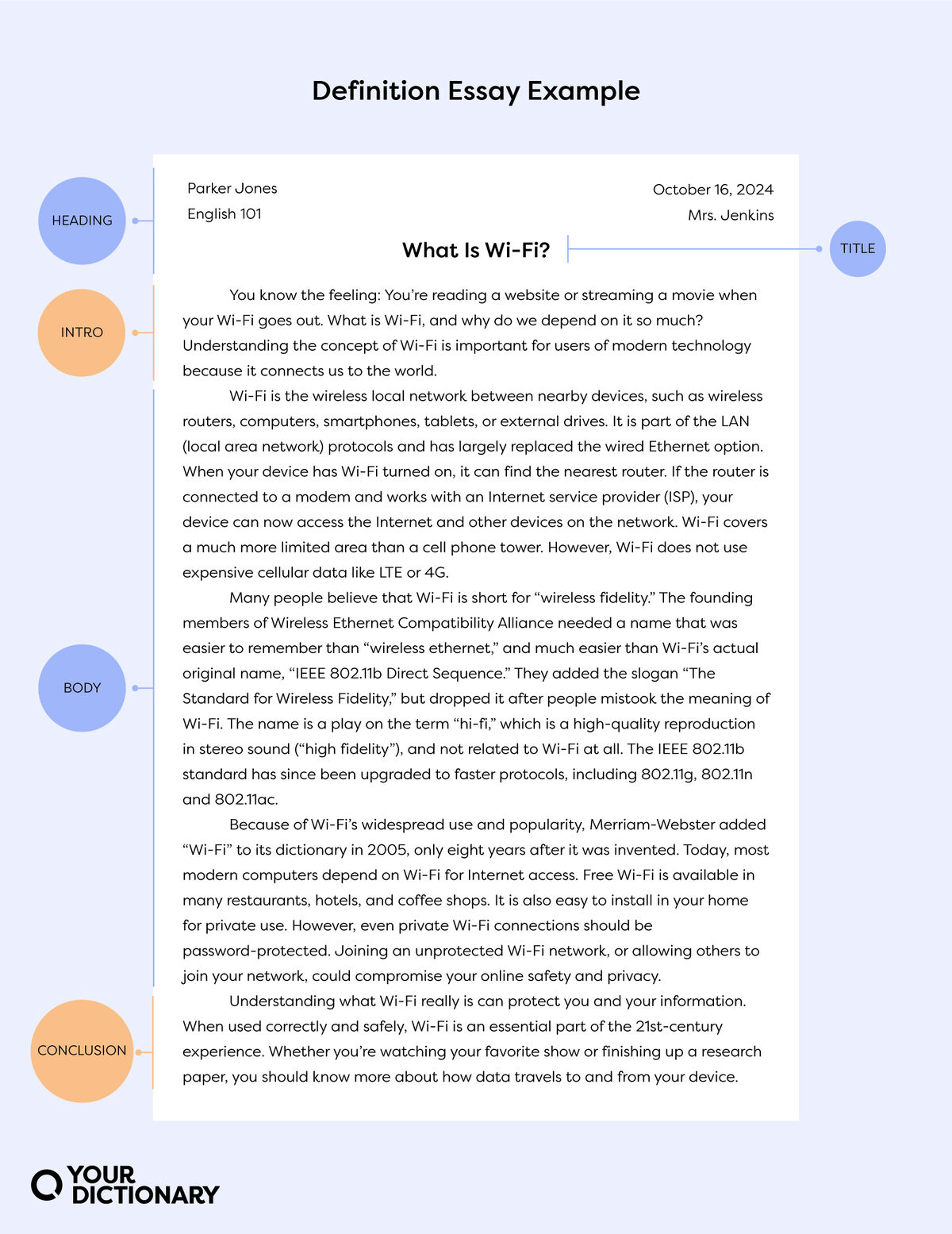

A formal definition essay defines a term or concept. Definition essays are a form of expository writing in which the writer provides information about the term to their audience. They typically follow a standard essay format and include both a definition and an analysis of the term. Review the example essays below and try exploring some of the suggested essay topics, too.
You can follow the general structure for an expository essay when writing a definition essay.

While the basic pieces of the essay are the same, definition essays should include some key elements.
There are basically two types of definition essays. They can define concrete concepts or abstract concepts. They should also provide a larger understanding of the term as a concept. Here first is an example of a definition essay for a concrete concept.
You know the feeling: You’re reading a website or streaming a movie when your Wi-Fi goes out. What is Wi-Fi, and why do we depend on it so much? Understanding the concept of Wi-Fi is important for users of modern technology because it connects us to the world.
Wi-Fi is the wireless local network between nearby devices, such as wireless routers, computers, smartphones, tablets, or external drives. It is part of the LAN (local area network) protocols and has largely replaced the wired Ethernet option. When your device has Wi-Fi turned on, it can find the nearest router. If the router is connected to a modem and works with an Internet service provider (ISP), your device can now access the Internet and other devices on the network. Wi-Fi covers a much more limited area than a cell phone tower. However, Wi-Fi does not use expensive cellular data like LTE or 4G.
Many people believe that Wi-Fi is short for “wireless fidelity.” The founding members of Wireless Ethernet Compatibility Alliance needed a name that was easier to remember than “wireless ethernet,” and much easier than Wi-Fi’s actual original name, “IEEE 802.11b Direct Sequence.” They added the slogan “The Standard for Wireless Fidelity,” but dropped it after people mistook the meaning of Wi-Fi. The name is a play on the term “hi-fi,” which is a high-quality reproduction in stereo sound (“high fidelity”), and not related to Wi-Fi at all. The IEEE 802.11b standard has since been upgraded to faster protocols, including 802.11g, 802.11n and 802.11ac.
Because of Wi-Fi’s widespread use and popularity, Merriam-Webster added “Wi-Fi” to its dictionary in 2005, only eight years after it was invented. Today, most modern computers depend on Wi-Fi for Internet access. Free Wi-Fi is available in many restaurants, hotels, and coffee shops. It is also easy to install in your home for private use. However, even private Wi-Fi connections should be password-protected. Joining an unprotected Wi-Fi network, or allowing others to join your network, could compromise your online safety and privacy.
Understanding what Wi-Fi really is can protect you and your information. When used correctly and safely, Wi-Fi is an essential part of the 21st-century experience. Whether you’re watching your favorite show or finishing up a research paper, you should know more about how data travels to and from your device.